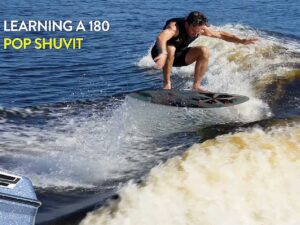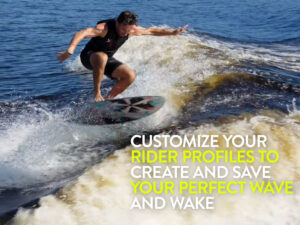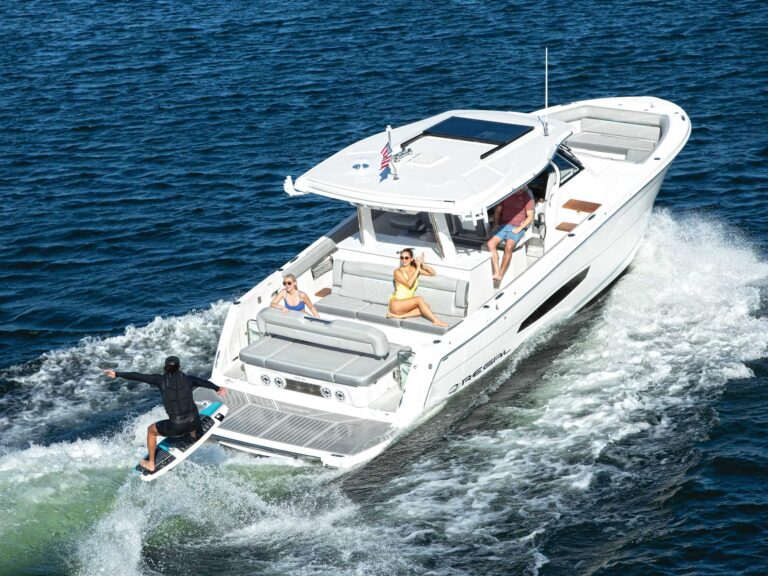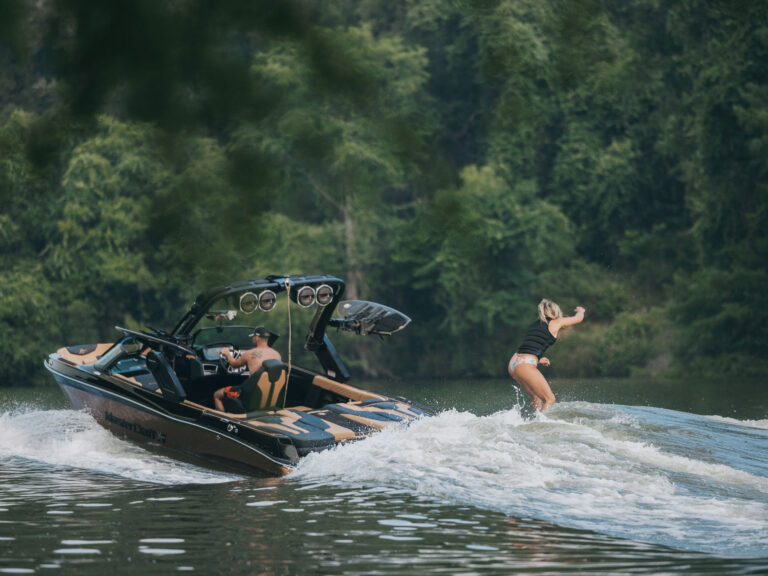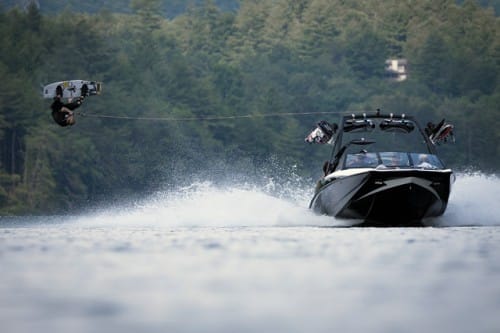
Sending mega moves through the atmosphere and into the flats begins long before you strap on your board. Physical and mental preparations need to be made. You must abandon all hesitation. Trepidation is your enemy. You need to acquire a mindset of complete confidence and full commitment. In the wise words of Jedi Master Yoda: “Do or do not. There is no try.” Like Yoda, I’m going to be your wise teacher in this guide to going big. — Randall Harris, Axis Boats rider
Know Your Limits
Blastin’ to the moon and back must be a gradual process. After all, you wouldn’t go bench press 350 pounds if you haven’t spent many moons in the gym straight flexin’, now would you? A huge trick into the flats takes 10 times the strength of your average wake-to-wake trick, which means you’ll get tired 10 times as fast. Listen to your body and know your limits to decrease chance of injury.
Ease In
Start by going just big enough to clear the wakes and progress from there. Flip tricks like tantrums, back rolls, front flips, roll to reverts, and scarecrows are the easiest tricks to do big. Big grabs and 180s would be the next step because it’s more difficult to go big and maintain a flat axis.
Edge Consistently
Edge out as far as you can. When I say edge out as far as you can, you need to realize that you will be edging that far back in with increasing rope tension every inch. You will have to maintain composure and handle control from the start of your edge through the entire duration of the trick. Easier said than done.
Edge Progressively
I can’t stress enough how important a progressive edge is when going big. It’s all about having proper line tension to keep you in control and on the desired axis. After you have edged all the way out, make sure the boat has a chance to pull out any slack and actually starts pulling you back towards the wake before you start edging. Slowly lean away from the boat to gently initiate your edge to avoid tipping the boat over and compromising the wake. I’m fortunate enough to ride behind an Axis A22, which is very stable and unlikely to tip and alter the wake. Keep the handle low and close to your waistline, always. On an edge scale of 1-10, you will start edging at a one and by the time you hit the wake you will be maxing out at a 10. The harder your edge and the closer to the wake you get, you will want to be gradually squatting lower to cope with increasing rope tension that naturally pushes your knees towards your chest. Stay low to keep solid balance with a low center of gravity. Standing too tall and getting huckle-bucked out of control when hitting the wake is not a pleasant thing. It’s important to remember that when edging hard and mobbing into the wake, the air you will get is amplified, but so are the slams.
Take Flight
Don’t hit the wake and think its okay to relax and let the handle out. Typically for most flip tricks and off-axis spins, I stay on edge all the way up and off the wake. For most flat grabs or spins, I start to flatten off at the bottom of the wake and stay flat all the way up. Whether hitting the wake flat or on edge, it’s very beneficial to have a wake with a long, smooth transition and a nice kick at the top like you get with an Axis. Steep or curling wakes are difficult to manage because they are more likely to decrease your momentum and knock you off balance.
Keep Control
Once you have taken flight, the most important thing is to keep the handle as close to your body as possible at all times. Remember to pop up almost all the way to the apex before grabbing or spinning and passing the handle. As you fly past the second wake, be aware of the fact that the further you go from that wake the more line tension you’ll have. This makes handle passing much more strenuous and difficult, but it’s all right because you’ll be feeling awesome.
Brace for Impact
As you start to come out of your flip or spin or as you are letting go of your grab, start spotting your landing as soon as possible. Once you spot your landing, prepare your body position accordingly. You can’t land in the same position as you would when landing on the transition. Brace for impact. At this point, it’s still definitely not okay to relax and let the rope out. You should actually give the handle another tug to keep it as close to your front hip as possible. A lot of riders’ arms get tired by this point, and they make the mistake of letting the handle drift from their waist, which causes them to go out the front and get wadded up. Most anyone who has spent a little time on the board can edge in hard and go flying off the wake into the blue sky, but you have to have the air awareness and strength to maintain control and actually complete the move. When you make contact with the water, you’ll want to have a little more weight over your back foot because the water obviously has more friction than air. Remember momentum is your friend. Use it to your advantage to reduce harsh impact. And finally, do your best to avoid touching your hands on the water or hitting your face on your knee.
 |
## 2013 Axis Boat Guide |
| Get more Axis with the 2013 Axis Boat Guide. Explore Axis’ 2013 ski boats, meet the Axis Boats team, and see Axis’ latest innovations through video, full-screen photo galleries and more. See Axis Boats’ promise of high performance at an incredible value in action, and get all of your questions answered by Axis Boats experts. Once you’ve found the best ski boat for you, book a test driver with the built-in dealer locator. Experience it now. |

